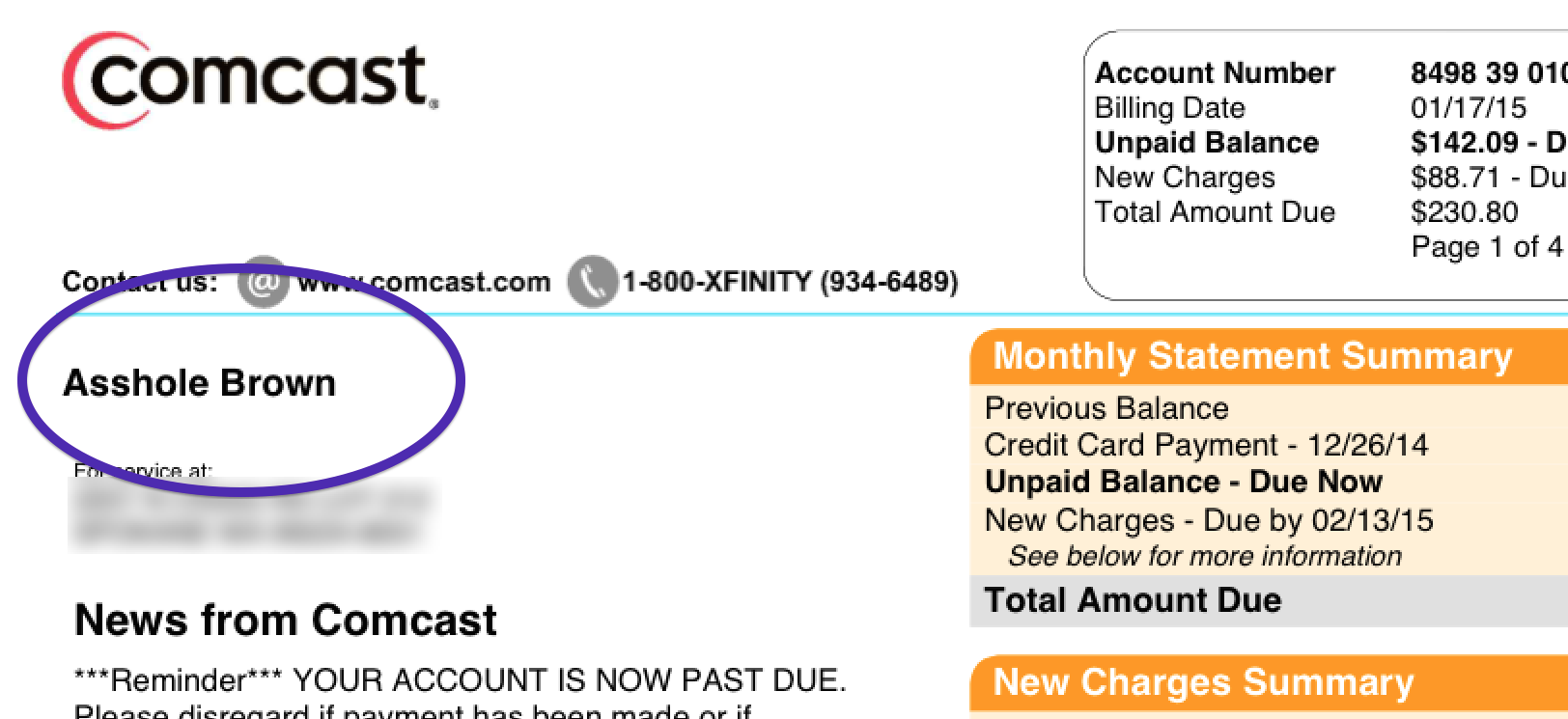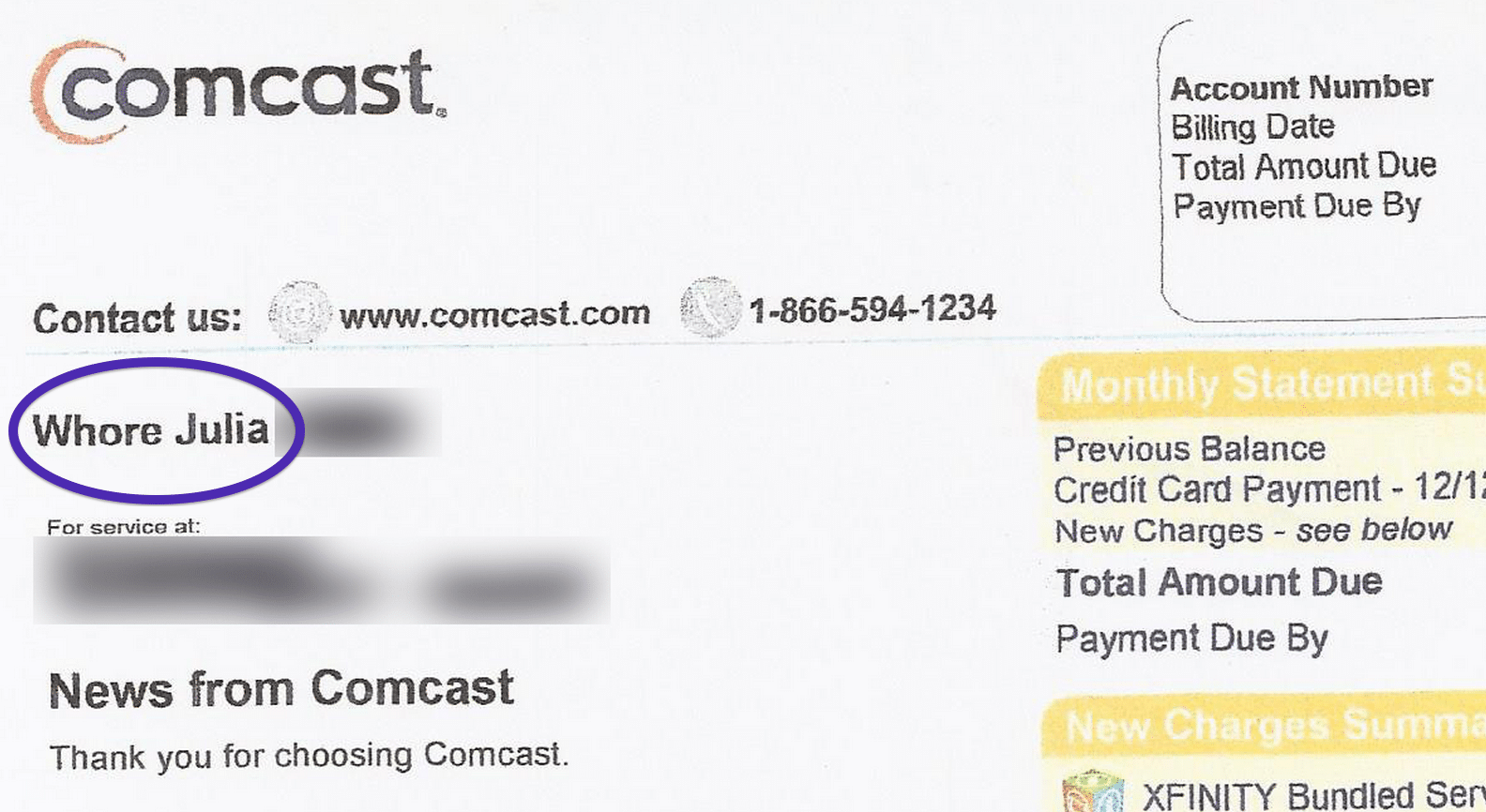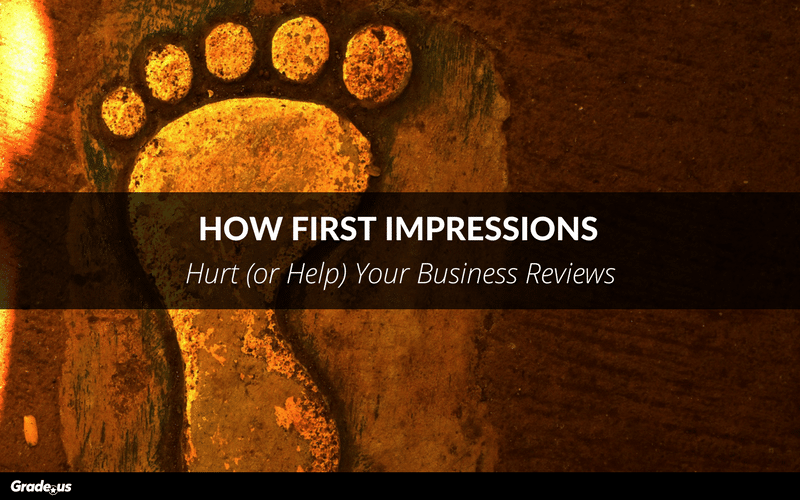Have you ever had a negative review?
A negative review from a satisfied customer, one who told you they were satisfied? It’s a frustrating experience. Sometimes their review isn’t negative, it’s just meh.
There’s a hidden trigger to negative reviews.
This trigger, if mismanaged, dramatically increases your odds of receiving a negative review. Do everything right, treat your customers well and you may still receive a negative review.
The trigger I’m referring to is first impressions.
First impressions hurt (or help) your business
Make a good first impression and you’re able to attract a significant amount of goodwill from customers, even when you make a mistake. Make a poor first impression and every good thing you do is discounted and denied.
Incredibly unfair isn’t it?
But why does this happen? Why are first impressions so important to us? First impressions are important because we use them to categorize and classify those around us.
We do this in several ways.
· Matching values. Research shows shared values (not engagement) builds customer relationships and loyalty. Customers use first impressions to get a sense of your values and how you do business.
· The dominance hierarchy. Customers in particular, people in general, are all sensitive to our place in the pecking order. We subconsciously understand a simple truth. The people, brands and organizations we associate with reflect on us. We use a diverse set of signals to establish status. It can be as complex as social class and as simple and innocent as laughter or the sound of your voice.
· Image and presentation. Every customer comes to you with expectations. They expect a business in your specific category to look, sound, behave and present in a very specific way. Deviate from those expectations, fail to present your business properly and you increase the odds of making a poor first impression.
· Your social competence. Every customer makes an appraisal of your social, emotional, cognitive and behavioral skills. Do you have socially competent employees who treat customers with respect and compassion? Do you show you have good conversation skills or do you dominate the discussion and focus on yourself?
Customers categorize your business based on the data collected by their conscious and subconscious mind. This data forms the basis for their first impressions.
Here’s why first impressions matter.
1. First impressions are near-instant
Research shows we form first impressions almost instantly, creating a detailed picture or concept of people, organizations and our environment in mere milliseconds.
· Researchers found we form first impressions after a 100 ms exposure to faces.
· Customers form a first impression about your business within 50 milliseconds.
Our subconscious mind takes in more information than our conscious mind. Our brains use data that’s largely subconscious to draw conclusions about those we interact with.
What this means for your reviews:
It’s incredibly important that you know and understand your target audience. When they discover your business they immediately begin making inferences on everything they see.
It’s an automatic process.
Want to increase your odds of getting a positive review? Figure out what their expectations are then meet them, it’s that simple.
1. Standard expectations. Cleanliness, efficiency, keep your promises, all of the usual things a healthy business is expected to do.
2. Exceptional expectations. Your business is credible, prestigious, or authoritative. You’re among the best in your field. You have answers to the vast majority of their questions.
Here’s what it looks like when a business fails.
2. First impressions are based primarily on emotion
With an average speed of 50 ms, first impressions are simply too fast for thought. So, what are they based on then?
Dr. Shlomo Wagner, neuroscientist at the University of Haifa shows first impressions are visual and based almost entirely on emotion. Here’s what’s fascinating about his research.
First impressions are driven by emotion but dependent on context.
· If a first impression is negative, the brain activates the communication protocol used for memory formation – your brain stores your negative first impression.
· If your first impression is positive, your brain uses a different communication protocol – one that’s optimized for learning. This creates excitement initially and is used to cement the connection, encouraging the growth of the relationship.
What this means for your reviews:
Jon Basso, owner of the Heart Attack Grill, says his food will literally kill you, and he’s proud of it. He proudly displayed his dead customer’s ashes on national TV after they died from eating his food.

Customers routinely experience heart attacks and chest pains at his restaurant.
It’s an extreme example but it teaches us something important.
Making a stand on any issue will attract some customers and repel others. Standing for this excludes that. If you’re running an agency that’s all about ethical marketing practices, you’ll repel grey hat customers who want you to “push the envelope.”
Remember, positive emotions draw your target customers in, triggering a natural desire to learn more. Negative emotions cement customer memories, signaling danger and warning them to stay away.
3. First impressions are permanent-ish
Professor Vivian Zayas, psychologist at Cornell University, wanted an answer to the question – are first impressions permanent?
So she ran an experiment.
Zayas and her colleagues, Gul Gunaydin and Emre Selcuk had participants look at several photos of people. They asked them about their first impressions based on those pictures.
They waited a month.
Then they invited participants back to the laboratory to interact with people. What these participants didn’t realize is that they were engaging with the very same people they had seen in photos a month earlier.
Here’s where things get interesting.
Here’s what Zayas and her team found. Not only did people draw the same exact conclusions about the people they met face to face, but they acted in ways to make their first impressions come true.
Their participants deliberately tried to influence and confirm their first impressions!
It gets worse.
Research by Nicholas Rule of the University of Toronto, found that not even facts can change first impressions.
This can be dangerous if it causes us to extrapolate or generalize our first impressions. A customer who has a bad experience with a used car salesman may make a permanent assessment of their character.
From a customer’s standpoint, their first impression is your fault, (even when it isn’t).
What this means for your reviews:
Comcast has had a long history of poor customer service, and horrible reviews.
They’ve changed their customer’s names to “Asshole Brown”,

Whore Julia…

and Dummy.

Comcast was listed as the worst company in America in 2014. They created such a bad first impression with customers that many are simply unwilling to do business with them.
They’ve taken dramatic steps to improve things.
They tried with a lengthy PR campaign that failed. They tried to rebrand themselves as “Xfinity.” But they just can’t get customers to forget about their past mistakes. It haunts them, creating open hostility and conflict. Conditioning customers to expect the worst and leave more bad reviews.
As we’ve seen, first impressions are incredibly difficult to shake. Make the wrong moves, become known for the wrong things and that perception just may become permanent. A devastating outcome if you’re looking for positive customer reviews.
What if you don’t know about the first impressions customers have of you? That’s an easy to fix problem.
Just ask your customers.
Anonymously of course. We’ve all been conditioned to be nice to each other. That’s a good thing except when you want customers to be honest with you. Asking them about their experiences from time to time (besides the post-sale request for reviews) enables you to keep track of customer sentiment.
4. First impressions are typically very accurate
When it comes to determining trustworthiness, our first impressions are incredibly accurate. Research from the University of California, Berkeley suggests it takes just 20 seconds to determine if a stranger is trustworthy or not.
Aleksandr Kogan et al. found that participants in the study were able to look at a 20 second video clip and accurately determine whether someone was trustworthy, kind and/or compassionate.
A research team, led by Jeremy Biesanz of the University of British Columbia, found that for the most part, people know when their first impressions are accurate.
Their research showed that impressions can be accurate even with very short interactions.
An accurate assessment of trustworthiness in a matter of seconds.
What this means for your reviews:
As the web has matured, customers have become more and more sophisticated. They’re aware of the power they have. What’s worse, they believe their first impressions are always right.
The downside? They’re usually right.
So, what’s the best approach if you find yourself in this situation? Own your mistakes, then work to change them. Do it in a way that doesn’t abuse, humiliate or alienate your customers.
Wait a minute.
Didn’t I just say first impressions are permanent? Doesn’t that mean…
A first impression can’t be changed?
Actually no.
You can change a first impression, if you know how. But it’s much easier to get things right the first time. The unfortunate part is that this isn’t always possible.
So what do you do?
If you find yourself in a terrible spot or an unfair situation what can you do to contain and change a negative first impression?
1. Surprise your customers. Apple is known for their strict limited warranties. Customers believe Apple to be unwilling to repair or replace products covered by warranty. A Reddit user by the name of n00bvin was distraught. He dropped his Macbook and was out $1,200 dollars. When he visited the Apple store, employees surprised him with a free replacement.
2. Overcompensate. Chipotle has been hammered by food safety scandals. Tainted food, major outbreaks, E. Coli and Norovirus. So they’ve gone above and beyond. They’ve overcompensated. They’ve closed stores, completely overhauled their storage and food prep procedures. Apologized to customers. They’ve done their best to show that things are different now. And it’s working. The lesson? Overcompensate to overcome a negative first impression.
3. Build a close(r) relationship. Zappos is known for their amazing customer service. Customers arrive with that perception. So what does Zappos do? They continue to be excellent. They show customers they care and continue to reinforce the positive first impression customers have of them. The rest, as they say, is history.
4. Continue to be excellent. If your customer’s first impression of you is based on a past negative experience there’s not a whole lot you can do. Challenge their opinion and you make their negative impression stronger. Try to convince them and you prove their point. Your only option with a customer who’s projecting is simply this: Continue to be excellent. They’ll come around in time.
First impressions are hard, but not impossible to change. You can change a negative first impression, if you’re willing to invest the time and effort.
Want the easier route?
Build a positive first impression from the beginning, then, work to maintain it. Protect your reputation and your perception in customers eyes.
Amazing five star reviews follow naturally.
First impressions help or hurt your business
Make a good first impression and you’re able to attract a significant amount of goodwill from customers. This insulates your business from negative reviews, even when you make a mistake. Make a poor first impression and you face an uphill battle.
Customers are fair…
If they know you genuinely care about them. Show them through your actions that you care, continue to be excellent and first impressions won’t matter as much.
With some upfront planning and conscientious effort, customers will see you for what you are.
Amazing all the time.
About the Author
Andrew McDermott
Andrew McDermott is the co-founder of HooktoWin. He shows entrepreneurs how to attract and win new customers.










